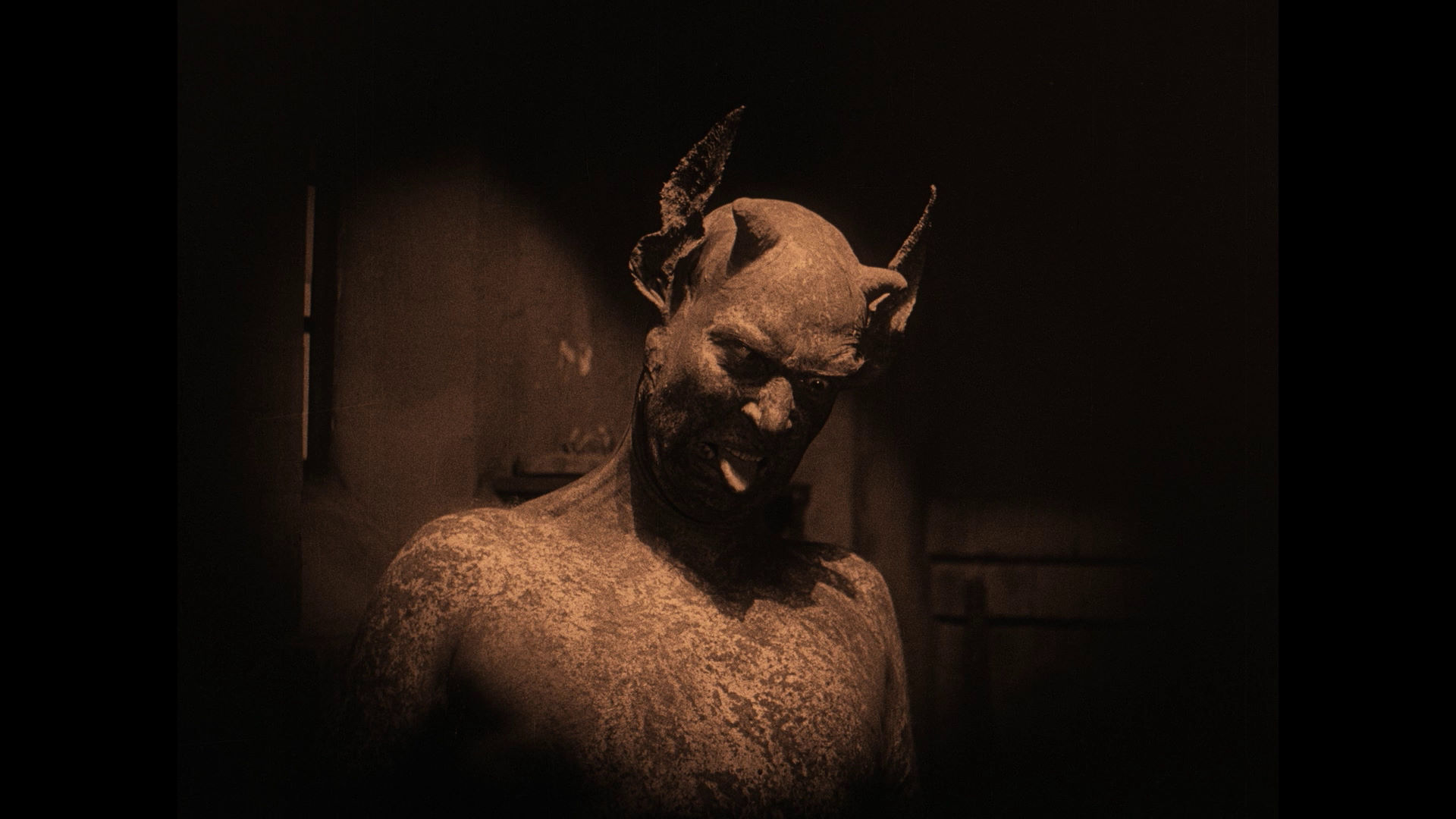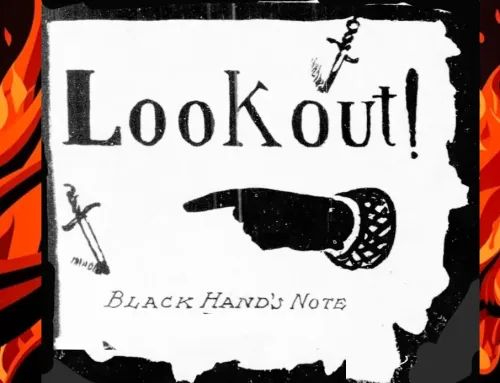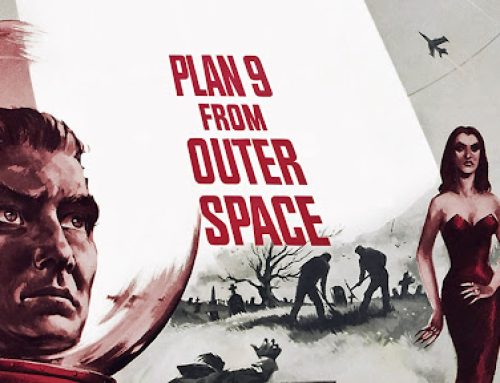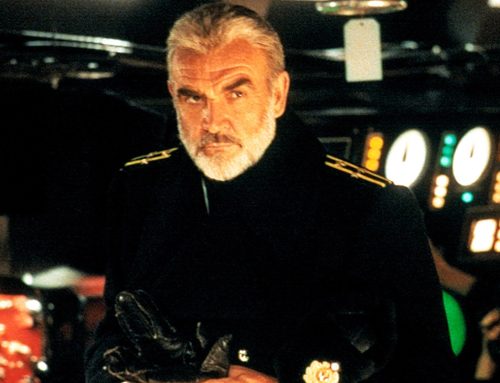100 MUST SEE HORROR FILMS!
Welcome to the Goblin & Sausage “House of Horror!”
What is it about the human race that makes us love a good scare? Whatever it is, since the beginning of time people have been fascinated with tales of spirits, creatures and ghouls that go bump in the night. From creepy tales around a campfire to the minds of Mary Shelly, Edgar Allen Poe and H.P Lovecraft, there has always been a demand for tales of terror and the macabre. It’s no wonder that in 1910, under the watchful eye of inventor Thomas Edison, that the very first horror film, a sixteen minute adaptation of the classic story of Frankenstein, was filmed. In the decades since then the horror film industry has never grown out of style, and never fails to thrill millions of film buffs world wide, being possibly the world’s most popular film genre.
Here at the Goblin & Sausage we have tried to assemble the best, most interesting, and most endearing list of horror films from around the world, taking in account the classic studios, directors, writers, trends, sub-genres and stars from the entire history of the genre . So grip your crucifixes a bit closer to your breast, and load your guns full of silver bullets as you view 100 must see horror films!
1. The Cabinet of Dr. Caligari (1920) One of the earliest horror films ever made, The Cabinet of Dr. Caligari is one of the finest of the silent era. When the mysterious Dr. Caligari comes to town, two friends, Francis and Alan, go to his performance where Caligari raises a sonuablist from the dead (played by a very young Conrad Viedt) who is able to predict the future….and death. Yet, when the predictions of death comes true, is it natural or is something more sinister going on in Dr. Caligari’s Cabinet? The Cabinet of Dr. Caligari features complex painted sets that have gone down in film history as an example of German expressionalisim, and have been copied and made tribute to in films ever since. Finally, the ending of the film is truly unexpected, and possibly one of the first good twist endings in movie history.
2. Häxan (1922) Probably the most shocking horror film of the silent era, Danish director Benjamin Christensen’s Häxan often goes ignored and overlooked. However, Häxan is easily one of the most daring and unique horror films made during the early part of the century, and while it is unconventional in the way it is presented, it is a must see for horror buffs and film scholars. Part documentary, part historical melodrama and part shock theatre, Christensen takes a look at the history of witchcraft through a series of vignettes, with focus going on the witch trials of the middle ages. Focusing on a number of different connected stories, Christensen looks at a chamber maid trying to seduce a friar, an old witch’s description of a satanic orgy, clergy witch hunters manipulating an innocnet maiden into confessing she is a witch and Satan’s penetration of a convent. Shocking imagery including bondage, torture, nudity, boiling babies, demons seducing women, demonstrations of medieval torture devices and a scene where women literally kiss Satan’s ass are still as shocking today as they were in 1922. However, Häxan is more then just early shock cinema. Christensen’s research is very well done, and he gives an interesting lesson on the history of European witchcraft, with much of his story based firmly in reality. In fact, during Häxan’s premier, Christensen provided a bibliography for the audience of the sources for his facts. Furthermore, the film was a special effect triumphant at the time it came out for it’s early use of superimposing to film a sea of witches flying over rooftops on broomsticks and demons and ghostly apparitions fading in and out of scenes, Häxan also has amazing costumes and make up, with convincing and scary demons, and a wonderful four legged skeletal creature that is seen walking through the Satanic orgy. Christensen himself plays the role of Satan, and in one scene is even seen in the role of Jesus Christ! Oddly enough, Häxan was reedited in 1967 from 108 minutes to 76 minutes by Anthony Balch and distributed with the title Witchcraft Through the Ages, and added a film score by jazz drummer Daniel Humar and narration by William S Burroughs. While Witchcraft Through the Ages is watchable, and fairly interesting itself, it is a pale substitution to Christensen’s original vision to this strange and dark landmark in horror.
3.Nosferatu (1922) The world’s first film version of Dracula is still arguably the best vampire movie ever made. As a result of a copyright lawsuit filed by Bram Stoker’s widow, director F. W. Murnau couldn’t use the actual name “Dracula”. However, all the characters are here: Mina and Jonathan Harker, Dr. Van Helsing, Lucy, Reinfield, and the mysterious Count Orlock the vampire (in replacement of Dracula). Possibly one of the creepiest silent films ever made, Nosferatu is a silent masterpiece. Furthermore, Max Schreck is more hypnotic than Bela Lugosi and scarier than Christopher Lee, making him the scariest Dracula to ever grace the screen. If anyone is looking to do a double feature film night, pair this film up with 2002′s Shadow of the Vampire, a fictional account of the filming of Nosferatu starring John Malkovich as F. W. Murnau and William DaFoe, who was nominated for an Oscar for his portrayal of Max Schreck.
4. Phantom of the Opera (1925) Lon Chaney Sr., the man of 1000 faces, stars as Erik the Phantom in this excellent telling of Gaston Leroux’s novel, which became not only the first major American horror film, but the first horror hit for Universal Studios which would be famous for their horror line in the decades that followed. Far closer to the original text than any other film based on this novel and worlds better than the Broadway musical, Phantom shows Erik as the monster he is and not as a romantic hero. Elaborate sets and fantastic makeup and costumes give the audience plenty of eye candy in this gigantic, spectacular film with the highlight is the Phantom’s entrance on the opera house steps dressed as Death. Of course, the real star of the film is the make-up job devised by star Lon Chaney Sr. himself, transforming his face into a skull like appearance. More brutal and less romantic then the story has been portrayed in recent decades, fans of the Andrew Lloyd Webber production may not like this one, but fans of silent films should not miss it.
5. Dracula (Spanish version) (1931) In 1931 Todd Browning filmed Bela Lugosi in the Universal production of Dracula and horror movie magic was born. However, when Browning wrapped up shooting for the day, and Bela Lugosi went home, director George Melford crawled onto the set and Spanish actor Carlos Villar put on the vampire cape to film a Spanish version of the exact same film which, while often overlooked, is in many ways a far stronger film. Instead of just dubbing the Dracula film being made, Universal studios used the same sets, same props and many of the same costumes with a full Spanish cast and shot what was, more or less, the same film. However some dynamic differences make the Spanish version of Dracula, which somehow manages to run a half an hour longer then the Browning version, a different and more unearthly looking picture. Perhaps it was the late night shooting schedule but the film seems far darker and sinister then the Lugosi version. The women, with lower cut dresses, seem more exotic and sexual. With this said, Villar is no Bela Lugosi, and often comes off being slightly cartoonist in the role. However, after a while you get used to him and he really is a fine actor. However the real scene stealer in this film is Pablo Rubio in the role of Reinfield, who could possibly one of the best portrayals of the character the screen has ever seen. His maniacal laughter itself is possibly the scariest part of this film. The newly restored and completed Spanish version of Dracula can be found as part of Universal’s Dracula Legacy Collection along with the Browning/Lugosi version and shouldn’t be overlooked anymore.
6. Dr. Jekyll and Mr. Hyde (1931) Although MGM wasn’t known for doing horror films, Robert Lewis Stevenson’s classic tale of schizophrenia and battle between the good and evil in the mind of man was nominated for three Academy Awards, and won the best actor Oscar for Fredric March in his dual role of Dr. Jekyll and Mr. Hyde, which, seventy five years later, is the only time a horror film has won an Oscar in a major category! When sexually frustrated humanitarian Dr. Henry Jekyll creates an elixir that separates his conscious from his inner habitations, he foolishly uses himself as a guinea pig in order to test his theory. As a result, a villainous alter ego appears in Jekyll’s place, who terrorizes the residents of the London South End, primarily prostitute Ivy Pearson. Now Dr. Jekyll must forge an inner battle with Mr. Hyde over his own sanity and his soul. The film was a cinematic miracle when it was brought to life in 1932 as audiences thrilled as Frederic March miraculously changed from handsome humanitarian Dr. Jekyll into the bestial brute Mr. Hyde before thier eyes! Fredric March not only relies on make up, but changes his body language, movements and voice in order to transform into the beast, and the transformation is so convincing you swear that another actor was brought in for Mr. Hyde! However, the real horror is not in the transformation, but in the story of domestic violence and emotional terror that is suffered by Ivy. Miriam Hopkins, in the role of Ivy, tugs on the sympathies of the viewer as they watch her abuse at the hands of Mr. Hyde. Shocking at the time of its release for its brutality and sexual context, Dr. Jekyll and Mr. Hyde still hits home today.
7. Freaks (1932) I’m not really sure if it’s fair to call this film a horror movie or not; although it generally is considered part of the genre. Director Todd Browning assembled the largest collection of sideshow acts including Siamese twins, human skeletons, a bearded woman, dwarfs, a human torso, pin heads and other oddities, and showcased them in an attempt to lovingly portray these “freaks” as humans with loves and hates like the rest of society. It doesn’t, however, always work. What is achieved more is both a curiosity piece and an exploitation film. A circus midget falls in love with a heartless trapeze artist who schemes to trick him out of his fortune. Compelling and well written, this film is sure to create tons of discussion on the morality and intent of Browning. Make sure to watch the brilliant documentary on the film available on its DVD. The history of “Freaks” is just as interesting as the film itself. “WE ACCEPT HER! WE ACCEPT HER! GOGGLE GOBBLE! GOOGLE GOBBLE! ONE OF US! ONE OF US!”
8. White Zombie (1932) Bela Lugosi stars in the roll of Legendre in one of his finest starring roles this side of Dracula. Although you won’t see any zombies feasting on brains in this early independent horror film, White Zombie was the first time in motion pictures that zombies were used as a subject matter. When Neil Parker and his fiancée Madeline accept the invitation of playboy Charles Beaumont to be married at his plantation in Haiti, Beaumont has sinister plans of his own. Wanting Madeline for his own, Beaumont turns to island witch doctor Legendre who uses zombie workers to operate his mill. However, when Legendre turns Marion into a zombie, her haunting and emotionless form isn’t what Beaumont thought he’d want. The melodrama runs high in this strange and eerie film which is often hindered by dramatically over the top performances. However, the performances add to the surrealism of the film and the film is full of surreal sets and creepy atmosphere which redeems it. Adding to the fantastic performance of Bela Lugosi is the creepy and sexy silence of Madge Ballamy who is magnetic as the zombiefied Madeline. White Zombie is also full of subtle eroticism which adds to the appeal of the film. Yet what is difficult to redeem is the fact that White Zombie suffers the worst final line in any horror film I’ve ever seen. Although it’s the type of line that was common in 1930s films, it is totally out of place and inappropriate in this film, and you can almost see actor Joseph Cawthorn wince as he says it. Oh well. Unfortunate scripting does often happen. Of course, Rob Zombie would go on to name his band after this film, immortalizing the title in the world of pop culture. Make sure to check out the original film that inspired it.
9. King Kong (1933) Over seventy years later, King Kong is still one of Hollywood’s greatest films. A film crew goes to a mysterious island where prehistoric animals still wander, to capture a giant monstrous gorilla which the natives worship. They lose their leading lady, played by Fay Wray, when Kong falls in love with her and carries her into the mysterious jungle. Now, fighting for survival against dinosaurs and other giant beasts, heroic sailor Jack Driscoll leads a team to save her. Of course, by films end, King Kong arrives in New York City and reaps havoc. Although the stop action animation is dated by our standards, for 1933 the scenes of Kong battling dinosaurs, escaping the natives wall, molesting Fay Wray, and crushing New York City was a miracle in film making and the climax at the top of the Empire State Building has gone down as one of the greatest images in film history. Bypass the Peter Jackson remake and rediscover this masterpiece instead.
10.The Bride of Frankenstein (1935) Although it’s the second installment of Universal’s Frankenstein series Bride of Frankenstein is one of those rare occasions where a sequel is better than the first. Based heavily on the original Mary Shelly text, Bride of Frankenstein tells the story of Frankenstein’s monster’s time with the old blind man in the woods as well as his request to Frankenstein to create him a bride. Easily Boris Karloff’s best performance as his most classic role, he does the impossible by giving a compelling performance by grunting broken dialogue such as “Drink Good” and “Fire Bad” (this is the only film where the monster speaks) and bringing a sense of pathos and compassion towards him instead of fear, sealing the Frankenstein monster as one of the most endearing movie monsters in movie history. Finally, the climax where the monster and its bride finally meet is fantastic, and Elsa Lanchester is oddly sexy as the monster’s mate, and their first meeting is unexpected and dynamic. The Bride of Frankenstein is one of the best entries in Universal’s horror line.





Leave A Comment